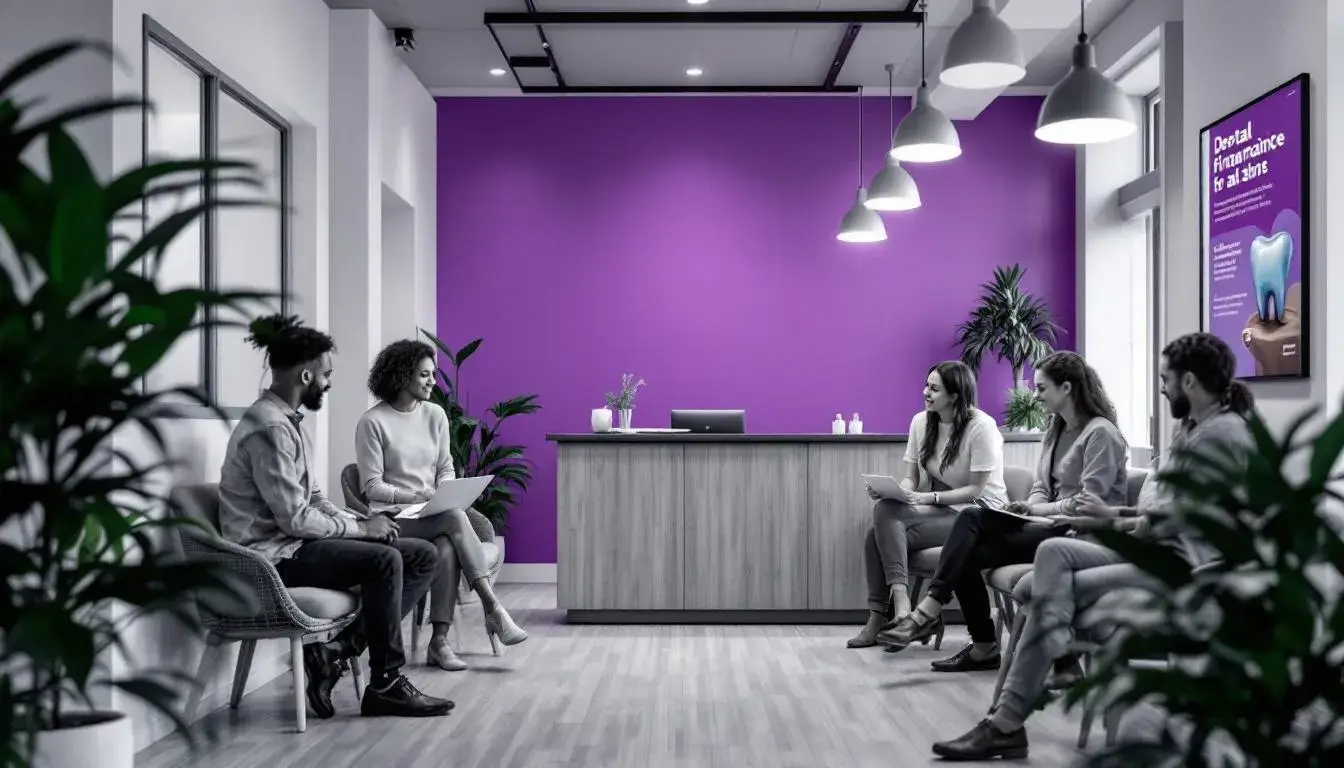
Finance for Cosmetic Surgery

Why cosmetic surgery finance is in focus
UK demand for cosmetic procedures continues to climb, and finance is central to how many people access treatment. The British Association of Aesthetic Plastic Surgeons reported a 5% rise in surgical procedures in 2024, totalling 27,462 operations. Facial rejuvenation saw strong double-digit growth, while male demand accelerated, including an 80% surge in gynaecomastia surgery. At the same time, the broader aesthetics market is substantial and growing. By 2025 it is valued around £2.4 billion with more than 4,400 clinics nationwide, and roughly 70% of treatments are surgical. Non-surgical procedures are expanding quickly too, contributing to an 8.4% industry growth rate in 2024 and bringing many first-time patients into the market.
This momentum persists even through economic uncertainty. Historically, cosmetic surgery has shown resilience as consumers prioritise treatments and spread costs over time. Advertising and social media amplify awareness and shape expectations, so transparency around pricing and finance is essential. Patients should also understand the role of the NHS in complications. While the NHS may treat significant post-operative issues, this is not guaranteed and does not remove the need for appropriate financial planning.
Against this backdrop, flexible payment solutions make procedures more attainable and can support safer decision-making. The right finance gives you clarity on total cost, a predictable monthly commitment, and the ability to plan for aftercare. Whether you are considering rhinoplasty, eyelid surgery, a facelift, or repeat non-surgical treatments, structured finance helps you weigh value, not just price. That is where Kandoo, a UK-based retail finance broker, helps you compare regulated lenders, understand affordability, and proceed with confidence.
Understanding APR is not just about percentages - it is about what you pay and when you pay it. Clarity turns a big decision into a manageable plan.
Who this helps most
If you are weighing up a cosmetic procedure and want to spread the cost responsibly, finance could suit you. It is relevant for patients booking with private UK clinics across surgical and non-surgical treatments, including those planning staged procedures or maintenance treatments. It also fits self-employed professionals and salaried employees who prefer predictable budgeting. Growing male demand shows this is not a niche audience. Whether you are exploring gynaecomastia surgery, facial rejuvenation, or regenerative therapies, finance can bring clarity to affordability and timelines. The key is finding a regulated, transparent option aligned to your credit profile and treatment goals.
Ways to fund your treatment
Clinic payment plans - interest-bearing or 0% short-term options offered by some providers.
Specialist medical loans - fixed-term loans via finance brokers like Kandoo.
Credit cards - promotional 0% purchase periods or standard APRs for flexibility.
Personal loans from your bank - fixed rates and terms, often rapid decisions.
Savings combination - deposit from savings plus a smaller loan to reduce interest.
Salary saving schemes - workplace savings or credit union products where available.
Overdrafts - short-term buffer, usually higher variable interest and fees.
Cost, impact, returns and risks
| Aspect | What it means | Typical impact | Key risk |
|---|---|---|---|
| Procedure price | Surgeon, clinic, location, complexity | From hundreds to many thousands | Underestimating total cost including aftercare |
| APR and fees | Interest rate plus any product charges | Affects monthly payment and total repayable | Low headline APR but high ancillary fees |
| Term length | Months or years to repay | Longer terms lower monthly cost | More interest paid overall |
| Deposit size | Upfront contribution from savings | Reduces borrowing and interest | Leaves limited emergency buffer |
| Non-surgical frequency | Repeat treatments over time | Smaller tickets but ongoing spend | Cumulative cost exceeds initial estimate |
| Complications cover | Contingency for revisions or care | Financial safety net | Inadequate provision if issues arise |
| Credit profile | Your affordability and credit history | Determines access and rate | Rejection or higher APR |
Eligibility and what lenders look for
Eligibility is based on UK residency, age, and affordability checks, with credit assessment central to responsible lending. Most lenders require you to be 18 or over, resident in the UK, and able to demonstrate income stability. They will typically review your credit history, existing commitments, and debt-to-income ratio to understand whether the repayments fit your budget. Proof of ID and address is standard, and some lenders may ask for recent bank statements or payslips. If you are self-employed, expect to provide tax returns or accountant references. Clinics occasionally offer in-house plans that use soft searches initially, moving to hard checks on approval. As a retail finance broker, Kandoo can match your profile to a panel of regulated lenders, helping you compare total costs, not just APR. A strong application shows realistic procedure pricing, a sensible term, and a buffer for follow-up care.
From quote to confirmation in simple steps
Choose a qualified clinic and confirm an itemised quote.
Decide deposit amount and preferred repayment term.
Check eligibility with a soft search where available.
Compare lenders, APRs, fees and total repayable.
Submit application with ID and affordability documents.
Receive decision and sign the credit agreement digitally.
Clinic schedules treatment once funds are arranged.
Monitor repayments and keep a contingency for aftercare.
Advantages and trade-offs at a glance
| Factor | Pros | Cons |
|---|---|---|
| Predictable budgeting | Fixed monthly payments aid planning | Longer terms increase total interest |
| Access to treatment | Proceed sooner while spreading cost | Commitment reduces future flexibility |
| Choice of lenders | Shop around for competitive APR | Too many hard checks can hurt credit |
| 0% or low-rate options | Pay less interest if eligible | Short terms may strain monthly cashflow |
| Credit building | On-time payments may help profile | Missed payments harm credit record |
| Non-surgical financing | Suits smaller, repeat treatments | Easy to overextend with add-ons |
Before you commit
Advertising can shape expectations, so cut through the noise with verified information from your surgeon and a transparent finance illustration. Cross-check what is included in the price, from pre-assessment to garments and aftercare. Ask how revision policies work and whether the clinic contributes to remedial costs. While the NHS may provide care for serious complications, it is not a substitute for comprehensive planning. Build a contingency of at least 10 to 20 percent for aftercare or delays. Ensure you understand cooling-off rights, early repayment terms, and any fees. Finally, sanity-check your budget against rising living costs so repayments remain comfortable even if rates or expenses change.
Alternative routes if finance is not right
Save and delay treatment until you can pay in full.
Use a 0% purchase credit card and clear before expiry.
Consider a smaller or staged procedure to reduce cost.
Explore credit unions for community lending products.
Ask your clinic about seasonal pricing or package efficiencies.
Questions people ask
Q: How much do cosmetic procedures cost in the UK? A: Prices vary widely by procedure and clinic. The market spans from a few hundred pounds for minor non-surgical treatments to several thousand for surgery such as rhinoplasty or facelifts.
Q: Why is cosmetic surgery demand rising? A: UK surgical volumes grew 5% in 2024, with expanding male participation and strong facial rejuvenation demand. Non-surgical treatments are also rising, contributing to annual industry growth of 8.4%.
Q: Are 0% finance offers always best? A: They can be cost-effective if you can afford the shorter term. Check for fees, what happens after the promotional period, and compare the total repayable across options.
Q: Will the NHS cover complications? A: The NHS may treat serious complications, but coverage is not guaranteed. Plan financially for aftercare and potential revisions, and ask your clinic about policies and insurance.
Q: Can self-employed applicants get approved? A: Yes, with documentation. Expect to provide tax returns or statements to evidence income stability. Brokers like Kandoo can help locate lenders comfortable with self-employed profiles.
Q: Do non-surgical treatments need finance? A: Many patients use flexible, short-term credit for repeat treatments like injectables or lasers. The amounts are lower but can add up across the year.
Ready to move forward
If financing fits your plan, Kandoo can introduce you to a panel of regulated UK lenders so you can compare APRs, terms and total costs in minutes. Make a clear-eyed decision, protect your budget, and schedule treatment when it truly suits you.
Important information
Kandoo is a credit broker, not a lender. Finance is subject to status, terms and conditions, and affordability checks. Interest rates, fees and offers can change. Borrow responsibly and consider independent advice if needed.
Buy now, pay monthly
Buy now, pay monthly
Some of our incredible partners
Our partners have consistently achieved outstanding results. The numbers speak volumes. Be one of them!


THERMAL AIR SOLUTIONS LTD

TRIDENT DAMP SOLUTIONS LTD










